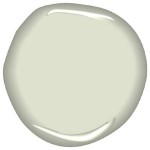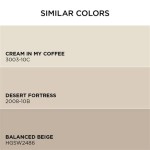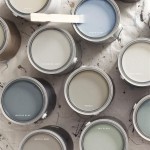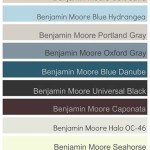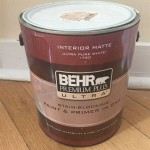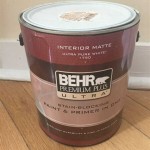What Is A Good Grey Beige Paint Color?
The quest for the perfect neutral paint color often leads homeowners and designers to explore the realm of "greige," a harmonious blend of grey and beige. This hybrid hue offers a sophisticated alternative to traditional beige and cooler grey tones, providing a versatile backdrop for various interior design styles and architectural features. Determining what constitutes a "good" grey beige, however, involves considering multiple factors, including undertones, lighting conditions, room function, and personal preferences. A color that appears ideal in one setting may appear drastically different in another, highlighting the importance of careful evaluation. This article delves into the characteristics of a suitable grey beige paint color, exploring the aspects that contribute to its success in creating aesthetically pleasing and functional spaces.
Understanding Undertones in Grey Beige
The success of a grey beige paint color hinges significantly on its undertones. Undertones are the subtle hints of other colors that lie beneath the surface of the primary color, influencing its overall appearance and how it interacts with other elements in a room. Grey beige paints can lean towards warmer or cooler undertones, which can drastically alter their perceived color. Warmer undertones may include hints of yellow, orange, or red, imparting a sense of coziness and comfort. Cooler undertones, on the other hand, may contain traces of blue, green, or violet, providing a more modern and sophisticated feel.
Identifying the undertones in a grey beige paint is crucial for ensuring color harmony within a space. To discern the undertones, compare the paint swatch with other neutral colors, particularly those with known warm or cool undertones. Placing the grey beige alongside a pure white or a true grey can also help reveal its underlying hues. In natural light, undertones tend to be more apparent, while artificial light can sometimes distort the perception of color.
The choice of undertones should complement existing elements in the room, such as flooring, furniture, and textiles. If a room features warm-toned wood floors and furniture, a grey beige with warm undertones will likely create a more cohesive and inviting atmosphere. Conversely, if the room contains cool-toned elements, such as stainless steel appliances or grey upholstery, a grey beige with cooler undertones may be a more suitable option. Ignoring undertones can result in color clashes and an overall disjointed aesthetic.
The Influence of Lighting on Grey Beige Paint Colors
Lighting plays a pivotal role in how any paint color appears, and grey beige is no exception. Natural light, artificial light, and the orientation of the room can all significantly impact the perceived color of the paint. Rooms with ample natural light tend to showcase the true color of the paint, while dimly lit rooms can make the color appear darker and more muted.
North-facing rooms typically receive cool, indirect light, which can accentuate the cool undertones in a grey beige paint. In these rooms, a warmer grey beige may be preferable to counteract the coolness of the light and create a more balanced effect. South-facing rooms, on the other hand, receive warm, direct sunlight, which can intensify the warm undertones in a grey beige paint. In these rooms, a cooler grey beige may be a better choice to prevent the space from feeling overly warm.
Artificial lighting also influences the perception of grey beige paint colors. Incandescent lighting casts a warm, yellow glow, which can enhance the warm undertones in a paint. Fluorescent lighting, in contrast, emits a cooler, blue-toned light, which can accentuate the cool undertones. LED lighting offers a more neutral light, but its color temperature can vary, so it is essential to consider the specific type of LED lighting used in the room.
Before committing to a grey beige paint color, it is crucial to test it in the room under various lighting conditions. Paint swatches on the wall can provide a more accurate representation of the color than looking at a small sample in a store. Observe the paint at different times of day and under different lighting conditions to ensure that it achieves the desired effect.
Selecting Grey Beige Based on Room Function and Style
The function of a room and the desired aesthetic style should also guide the selection of a grey beige paint color. Different rooms serve different purposes and require different atmospheres. A bedroom, for example, may benefit from a calming and restful color palette, while a living room may require a more vibrant and engaging atmosphere.
For bedrooms, a softer and more muted grey beige can create a sense of tranquility and relaxation. Warmer undertones can add a touch of coziness, while cooler undertones can promote a sense of serenity. Avoid overly saturated or dark grey beige colors, as they can be overwhelming and disruptive to sleep.
In living rooms, the choice of grey beige can be more flexible, depending on the desired style. For a modern and minimalist living room, a cooler grey beige can create a clean and sophisticated look. For a more traditional and inviting living room, a warmer grey beige can add a touch of comfort and warmth. Consider the existing furniture and accessories when selecting a grey beige for the living room to ensure a cohesive and harmonious design.
Kitchens and bathrooms often benefit from brighter and cleaner grey beige colors. Lighter shades can enhance the feeling of spaciousness and cleanliness, while warm undertones can add a touch of warmth to these often-functional spaces. In kitchens, consider the color of the cabinets and countertops when selecting a grey beige to ensure a complementary palette. In bathrooms, consider the color of the tiles and fixtures to create a cohesive and visually appealing design.
The architectural style of the home can also influence the choice of grey beige. In older homes with traditional architectural details, a warmer grey beige may be more appropriate to complement the existing character and charm. In modern homes with clean lines and minimalist details, a cooler grey beige may be a better fit to enhance the contemporary aesthetic.
Ultimately, a "good" grey beige paint color is one that harmonizes with the existing elements in the room, complements the lighting conditions, and aligns with the desired function and style of the space. Careful consideration of these factors will help ensure that the chosen grey beige creates a beautiful, functional, and inviting environment.

The 12 Best Gray Greige Paint Colours Sherwin Williams Kylie M Interiors

Choosing Colors Going From Beige To Greige Hirshfield S

The 12 Best Whole Home Gray Greige Paint Colors Kylie M Interiors

The Best Warm Gray Paint Colors Life On Virginia Street

Best Greige Paint Colors 15 Shades Of

7 No Fail Greige Paints Paint Color Palette Interior Design

The Best Greige Paint Colors From Benjamin Moore So Much Better With Age

Explore Over 3 500 Paint Colors Benjamin Moore Neutral For Home

Greige Paint 7 Best Colors Diy Decor Mom

20 Best Neutral Paint Colors West Magnolia Charm
Related Posts

